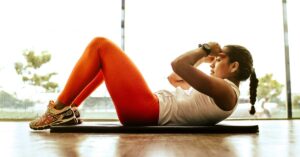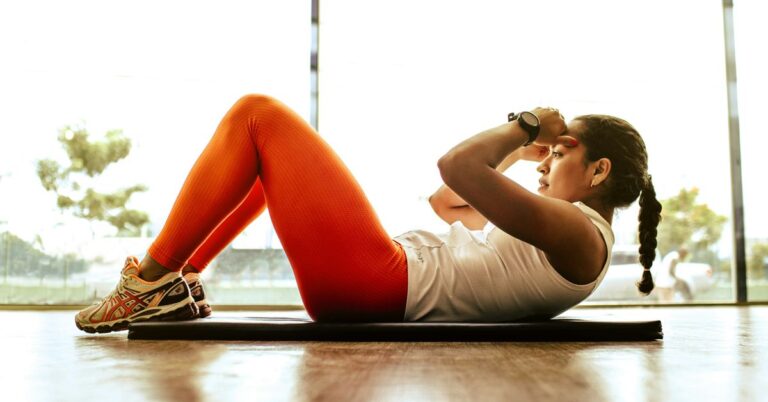Master the Art of Recovery: Essential Mobility Techniques You’re Not Using Yet
Ah, recovery—the often-overlooked sibling of training. For many athletes, the focus is on lifting heavier, running faster, or simply doing more. Yet, when the dust settles and the sweat dries, it’s the art of recovery that truly separates the champions from the everyday gym-goers. If you’re nodding along and thinking, “I know, I know, I need to stretch more,” let me assure you, there’s a whole world of mobility techniques just waiting to be explored. Buckle up—it’s time to dive into the essential recovery techniques that you might not be using yet.
The Importance of Mobility in Recovery
Why should we care about mobility? For starters, mobility isn’t just about being able to touch your toes or impress your friends with a flawless squat. It’s the foundation of movement efficiency, injury prevention, and yes—overall performance. Think of mobility as the oil in your car’s engine; without it, things start to grind. Some studies suggest that athletes with better mobility tend to recover faster and sustain fewer injuries over time. Imagine that! So how do we master this elusive art?
Dynamic Stretching: The Unsung Hero
Let’s kick things off with a technique that many athletes overlook—dynamic stretching. Now, before you roll your eyes and think this is just a warm-up routine, let me clarify. Dynamic stretching is about actively moving through a range of motion, preparing your muscles and joints for the work ahead (or helping them recover after). It’s like a gentle reminder for your body, saying, “Hey, we’re not done yet!”
Some dynamic stretches you might consider include:
- Leg Swings: Swing one leg forward and backward, and then side to side. It’s a great way to loosen up the hips.
- Arm Circles: Big circles, small circles—make your arms dance! This helps to activate your shoulders.
- Walking Lunges: Step forward into a lunge, keeping your torso upright. This dynamic movement stretches the hip flexors while engaging the legs.
Incorporating these into your routine doesn’t require a PhD in kinesiology. Just a few minutes each day can set a solid foundation for your recovery.
Foam Rolling: The Painful Pleasure
Ah, foam rolling—my love-hate relationship with this piece of equipment is almost poetic. At first glance, a foam roller looks like a torture device, but when used correctly, it becomes a pathway to recovery bliss. Foam rolling, or self-myofascial release, involves applying pressure to specific parts of the body to relieve tension and improve blood flow. It’s like giving yourself a massage without the awkward small talk.
Here’s a breakdown of how to do it effectively:
- Identify the Spot: Roll over the muscle until you find a tender spot. Trust me, you’ll know it when you find it.
- Apply Pressure: Once you’ve found that sweet spot, hold the pressure for 20-30 seconds. Breathe through the discomfort—think of it as a mini workout for your pain tolerance.
- Move Slowly: Roll back and forth over the area for about 1-2 minutes, gradually moving to adjacent areas.
Remember, foam rolling should never be excruciating. If you’re yelping and crying, you might be doing it wrong (or you might just have super tight muscles—either way, take it easy).
Active Recovery: Move to Heal
Ever heard the phrase, “Sometimes you need to keep moving to recover”? That’s the essence of active recovery. Instead of plopping on the couch post-workout (though that sounds tempting), consider engaging in low-intensity exercises that promote blood flow and keep your muscles engaged. Activities like walking, swimming, or cycling can be game-changers.
For instance, I once attended a recovery class that focused on gentle yoga flows. To my surprise, what I thought would be a light stretching session turned into a delightful exploration of movement. The instructor, a lively character with a knack for puns, kept reminding us that “every pose is a new opportunity to show your body some love.” I chuckled, but I got the point. Active recovery can be rejuvenating—both physically and mentally.
Breathwork: The Overlooked Tool
Let’s take a moment to talk about something that’s often dismissed in the recovery conversation: breathwork. Yes, you read that right. When was the last time you paused to think about how you breathe? It might sound trivial, but controlled breathing techniques can significantly impact recovery by reducing stress and promoting relaxation.
One technique that I’ve found particularly helpful is the 4-7-8 breathing method. Here’s how it works:
- Breathe in through your nose for a count of four.
- Hold your breath for seven counts.
- Exhale slowly through your mouth for eight counts.
Repeat this cycle a few times, and you may find yourself feeling more relaxed and focused. It’s a simple, yet powerful tool that can be done almost anywhere—perfect for those post-workout cooldowns.
Mobility Drills: Unlocking Your Range
Now, let’s get into some specific mobility drills that can help improve flexibility and range of motion. Think of these as the secret weapons in your recovery arsenal. Here are a few crowd favorites:
Hip Openers
The hips are often a tight area for many athletes. Incorporating hip openers into your routine can work wonders:
- Pigeon Pose: This yoga staple stretches the hip flexors and glutes wonderfully.
- 90/90 Stretch: Sit with one leg in front of you at a 90-degree angle and the other leg behind you, also at a 90-degree angle. Lean forward to deepen the stretch.
Shoulder Mobility
Don’t forget about the shoulders! Here are a couple of great moves:
- Wall Slides: Stand against a wall and slide your arms up and down while keeping your elbows and wrists in contact with the wall.
- Band Pull-Aparts: Using a resistance band, pull it apart while keeping your arms straight. This helps to activate the upper back and shoulder muscles.
Spinal Twists
Give your spine some love with these twists:
- Seated Spinal Twist: Sit cross-legged and twist your torso to one side. Hold for a few breaths, then switch sides.
- Cat-Cow Stretch: This one’s a classic! Alternate between arching your back and rounding it while on all fours.
Incorporate these drills into your regular routine, and you might just surprise yourself with how much more range you have after a few weeks.
Nutrition: Fueling Recovery
Let’s take a brief detour to chat about nutrition. What you put into your body post-workout can significantly influence your recovery. I once had a nutritionist tell me, “Your body is like a car; if you don’t fuel it properly, it won’t run well.” It struck me that the same logic applies to recovery. Here are some key nutrients to consider:
- Protein: Essential for muscle repair. Aim for a protein-rich snack or meal within an hour after your workout.
- Complex Carbohydrates: Replenish glycogen stores with whole grains, fruits, and veggies.
- Healthy Fats: Don’t shy away from fats! They’re crucial for hormone regulation and overall health.
And remember to hydrate! Water plays a vital role in recovery, so don’t skimp on those fluids. I know, I know—water isn’t as exciting as a protein shake, but it’s essential.
Sleep: The Ultimate Recovery Tool
I can’t stress this enough: if you’re skimping on sleep, you’re sabotaging your recovery. Sleep is when the body does most of its repair work. It’s like hitting the reset button on your system. Aim for 7-9 hours of quality sleep per night. I’ve often joked that I’d trade a day’s worth of workouts for a solid night’s sleep. The benefits are just that critical! If you have trouble sleeping, consider implementing a nighttime routine—dim the lights, put away the screens, and maybe even pick up a book. Your body will thank you.
Mindfulness and Recovery
Lastly, let’s touch on mindfulness. In our fast-paced world, it’s easy to overlook the mental aspect of recovery. Practicing mindfulness can help you reconnect with your body and improve your overall well-being. Techniques such as meditation or simply taking a moment to breathe deeply can do wonders for your recovery process.
I’ve found that dedicating a few minutes each day to mindfulness has not only improved my recovery but also my performance. It’s a win-win! So, whether it’s through meditation apps or just sitting quietly in your favorite spot, make room for mindfulness in your recovery routine.
Conclusion: Crafting Your Recovery Plan
Mastering the art of recovery is about more than just knowing what techniques to use; it’s about crafting a personalized plan that fits your lifestyle, training intensity, and goals. Remember, recovery is not a one-size-fits-all approach. What works for one person may not work for another. So take the time to experiment with these techniques, listen to your body, and find what resonates with you.
As you venture into the world of mobility and recovery, keep in mind that it’s all part of the journey. Embrace the process, celebrate your progress, and don’t forget to have a little fun along the way. Whether you’re an elite athlete or a weekend warrior, integrating these mobility techniques into your routine can help you achieve your goals while keeping your body happy and healthy.
So, what are you waiting for? Get out there, move that body, and start mastering the art of recovery. You’ve earned it!









